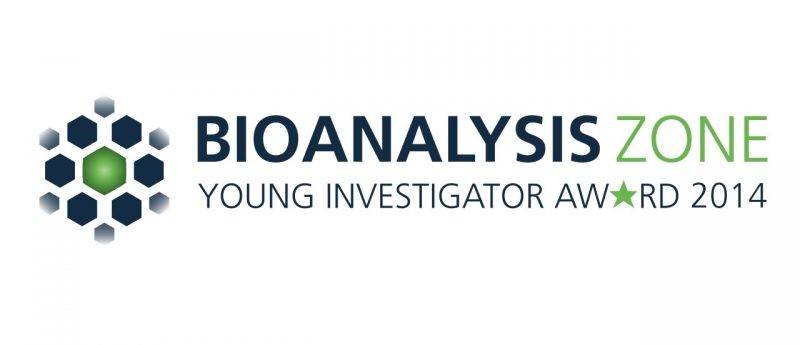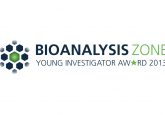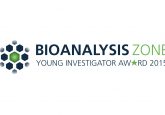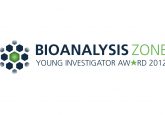2014 Young Investigator: Laurence Mayrand-Provencher

Nominee:
Nominated By:
Supporting Comments:
What made you choose a career in bioanalysis?
I was driven to join the bioanalysis field as there are so many career opportunities for an analytical chemist in this developed life science industry in Quebec, Canada. The opportunity to start my career as a bioanalytical scientist eventually presented itself, and I chose pursue this interest further as I found the position both fulfilling and challenging. Also, in the constantly evolving field of bioanalysis, we need to continuously modernize our techniques and we have the opportunity to constantly keep learning, which I find particularly motivating. Furthermore, my scientific and management team, which includes Milton Furtado & Jean-Nicholas Mess (Scientific Advisors), Josée Michon (Associate Director) and Dr. Fabio Garofolo (Vice-President of Bioanalytical Services), strongly encourage my scientific personal development.
Describe the main highlights of your bioanalytical research, and its importance to the bioanalytical community.
Many regulatory agencies include in their guidelines the need to investigate the effect of lipemic plasma on the reliability of the data as part of a bioanalytical assay validation. Lipids can cause a matrix effect, specificity and recovery issues, which can potentially lead to inaccurate data if left unaccounted for. However, finding the appropriate matrix type to be used to perform a scientifically meaningful lipemic plasma test is a major challenge, as the differences between those commercially available matrices are unknown. Given the potential implications, this issue is currently considered quite a “hot” topic in the bioanalytical industry.
As part of my research, I described the differences in lipid content between normal plasma, synthetic lipemic plasma mixes and two types of natural lipemic plasma. The results obtained showed that natural plasma with high triglycerides content should be used to perform a scientifically meaningful lipemic plasma test. To support the triglycerides level choice to be tested for bioanalytical method validation, the data from 2952 healthy volunteers from our clinic was analyzed and a minimum triglycerides concentration was proposed. The publication entitled “Choosing the appropriate matrix to perform a scientifically meaningful lipemic plasma test in bioanalytical method validation” discusses this research and is available in Bioanalysis.
Describe the most difficult challenge you have encountered in the laboratory and how you overcame it.
As part of LC–MS/MS bioanalytical method development, complex challenges are dealt with on a regular basis. The development of an assay for endogenous compounds can be particularly challenging to achieve, as a proper surrogate matrix must often be found and since interference peaks coming from other similar endogenous molecules are frequently present. In addition, when the matrix is urine, adsorption issues are often observed and the complexity of the assay development process is further increased.
This was the case for the method development of endogenous Cortisol and 6b-Hydroxycortisol in human urine, in which both compounds were found to absorb to the polypropylene containers used for urine collection and in which several interference peaks were seen at their respective mass transition. To overcome the absorption issue, additive tests were conducted and conditions were eventually found in which negligible absorption was obtained. A surrogate matrix was necessary as the endogenous levels of both compounds were too high versus the lower limit of quantitation. To overcome the interference issue, chromatographic conditions were specifically optimized to properly separate the endogenous interferences from Cortisol and 6b-Hydroxycortisol. Thus, multiple method development challenges were successfully overcome and a robust assay was obtained.
Where do you see your career in bioanalysis taking you?
I currently have the opportunity to occupy a motivating position and to work in a highly qualified team of scientists in a Contract Research Organization (CRO) which is among the global leaders of our industry. This is the type of working environment that motivates me to constantly improve my scientific knowledge and maximize my learning opportunities.
Algorithme Pharma encourages personal scientific development by allowing time to work freely on scientific projects of our choice and offers plenty of opportunities for career growth. I intend to seize these opportunities as they present themselves. Also, occupying a position in which I could provide counseling to a team of scientists in LC–MS/MS bioanalytical method development is interesting to me. I still have plenty of work to do before reaching this goal though! Acquiring additional laboratory experience, staying up to date on current scientific matters and pushing for innovation are crticial to achieve this objective.
How do you envisage the field of bioanalysis evolving in the future?
Given my expertise being specifically focused on regulated LC–MS/MS bioanalysis, I am deeply involved in this field. Bioanalytical regulatory guidelines have become stricter and more demanding, which require higher quality assays and puts pressure on development resources and costs. In this context, it becomes critical to constantly put in place innovative solutions in order to stay competitive in the industry while meeting current regulatory expectations.
Increasing assay sensitivity is an efficient way to diminish biological sample extraction costs, as simpler processes can be used (e.g. protein precipitation instead of solid phase extraction), which can save analyst time, consumables costs and decrease method development complexity, among other benefits. The purchase of new generation mass spectrometric instruments with higher sensitivity is a viable option to achieve this goal, but it requires significant capital investment. An alternative would be to use microflow LC–MS/MS, which can lead to important sensitivity gains versus regular LC–MS/MS. It is expected that as this technique is refined in terms of ruggedness, ease of use and source design, it will gain in popularity within the regulated bioanalysis community.
Please list 5 of your recent publications, and select one that best highlights your career to date in the field of bioanalysis.
Mayrand-Provencher L, Furtado M, Mess J-N, Garofolo F. Choosing the appropriate matrix to perform a scientifically meaningful lipemic plasma test in bioanalytical method validation. Bioanalysis (Epub ahead of print) (2014).
Stevenson L, Rocci M, Garofolo F et al. 2013 White Paper on recent issues in bioanalysis: “Hybrid” – the best of LBA & LC/MS. Bioanalysis 5(23), 2903–2918 (2013).
Mayrand-Provencher L, Lin S, Lazzerini D, Rochefort D. Pyridinium-Based Protic Ionic Liquids as Electrolytes for RuO2 Electrochemical Capacitors. J. Power Sources 195(15), 5114–5121 (2010).
Mayrand-Provencher L, Rochefort D. Influence of the Conductivity and Viscosity of Protic Ionic Liquids Electrolytes on the Pseudocapacitance of RuO2 Electrodes. J. Phys. Chem. C. 113(4), 1632–1639 (2009).
Mayrand-Provencher L, Rochefort D. Origin and Effect of Impurities in Protic Ionic Liquids for Applications in Electrochemistry. Electrochim. Acta. 54(28), 7422–7428 (2009).
First choice: Mayrand-Provencher L, Furtado M, Mess J-N, Garofolo F. Choosing the appropriate matrix to perform a scientifically meaningful lipemic plasma test in bioanalytical method validation. Bioanalysis (Epub ahead of print) (2014) .
Reasoning: This publication contains my most important contribution to the bioanalysis community so far. It discusses how to choose the appropriate matrix type to be used to perform a lipemic plasma test, a “hot” topic in the industry as many regulatory agency guidelines include the need to investigate the effect of lipemic plasma as part of a bioanalytical assay validation and since it is unclear how this should be performed.




